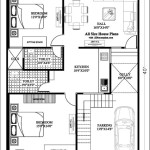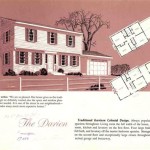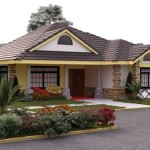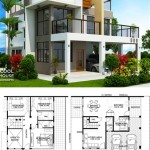House Designs and Floor Plans: A Guide to Creating Your Dream Home
Building or renovating a home is a significant undertaking, requiring careful planning and consideration of various aspects. One crucial element is the design and layout of your space. House designs and floor plans are the blueprints that guide construction, shaping the flow, functionality, and aesthetics of your future home. This guide explores the significance of house designs and floor plans, delves into key considerations, and provides insights into the design process.
Understanding the Importance of House Designs and Floor Plans
House designs and floor plans serve as a comprehensive visual representation of your home, outlining the arrangement of rooms, walls, doors, windows, and other structural elements. Beyond mere aesthetics, these blueprints play a crucial role in:
Functionality and Flow:
Floor plans facilitate efficient movement throughout the house, defining spaces for various activities and ensuring seamless transitions between areas.Space Optimization:
Designs optimize the use of available space, ensuring sufficient room for furniture, appliances, and other necessities while maximizing comfort and functionality.Structural Integrity:
Floor plans provide detailed information for builders, ensuring the structural integrity and stability of the house.Budgeting and Cost Estimation:
Detailed designs enable accurate material estimations, labor costs, and overall project budgeting, allowing for informed financial planning.Visualizing the Final Product:
Floor plans and designs allow you to visualize the finished home before construction even begins, enabling adjustments and modifications to suit your preferences.
Key Factors to Consider in Designing Your Home
Developing a successful house design and floor plan involves careful consideration of various factors, including:
1. Lifestyle and Needs
The design should reflect your lifestyle, needs, and the number of occupants in your household. Consider factors such as:
- Family size and composition (e.g., children, pets)
- Living habits and preferences (e.g., entertaining, working from home)
- Accessibility requirements (e.g., wheelchair access)
- Specific hobbies and interests (e.g., music room, home office)
2. Site and Location
The topography, orientation, and surrounding environment of your site play a significant role in design. Consider:
- Sunlight exposure and shadow patterns for passive heating and cooling
- View opportunities and maximizing natural light
- Privacy considerations and setbacks from property lines
- Access to utilities, services, and transportation
3. Budget and Materials
Establish a realistic budget and consider the cost of materials, labor, and permits. Research different building materials and their impact on cost, durability, and aesthetics. Explore options for sustainable building practices and energy efficiency.
4. Architectural Style and Aesthetics
Select an architectural style that resonates with your personal taste and complements the surrounding environment. Consider factors such as:
- Exterior design (e.g., facade, roofline, windows)
- Interior finishes (e.g., flooring, walls, ceilings)
- Color palettes and accent features
- Landscaping and outdoor living spaces
The Design Process: From Concept to Completion
The design process typically involves several steps:
1. Initial Consultation
Meet with an architect or designer to discuss your needs, preferences, and budgetary constraints. Present ideas, inspiration, and any existing plans or sketches.
2. Site Analysis and Planning
The architect will analyze the site and its features, considering factors like topography, sun exposure, and views. They will develop preliminary sketches and layouts to explore different design possibilities.
3. Concept Development
Based on the initial analysis, the architect will refine the concept, creating detailed floor plans, elevations, and sections. They will present these drawings for your feedback and approval, allowing you to make necessary adjustments.
4. Construction Documents
Once you approve the final design, the architect will prepare the construction documents, which include detailed drawings, specifications, and materials selections. These documents will serve as the blueprint for builders to follow during construction.
5. Construction and Project Management
The construction phase involves the building of the house according to the approved plans. An architect or project manager will oversee the construction process, ensuring adherence to the design and specifications.
House designs and floor plans are essential tools for creating a home that meets your individual needs, reflects your style, and enhances your quality of life. By carefully considering the factors outlined above, engaging with design professionals, and actively participating in the process, you can build or renovate a home that fulfills your dreams.

Floor Plans Types Symbols Examples

Small House Design 2024001 Pinoy Eplans Floor Plans

18 Small House Designs With Floor Plans And Decors

Top 5 Modern House Plans With Photos Floor Archid

Small House Design Shd 2024007 Pinoy Eplans One Y Bungalow Plans Layout

Modern House Design Floor Plans And Designs

House Plans How To Design Your Home Plan

House Plans Home Floor Architecturalhouseplans Com

28 Modern House Designs Floor Plans And Small Ideas

Small House Design Series Shd 2024008 Pinoy Eplans








